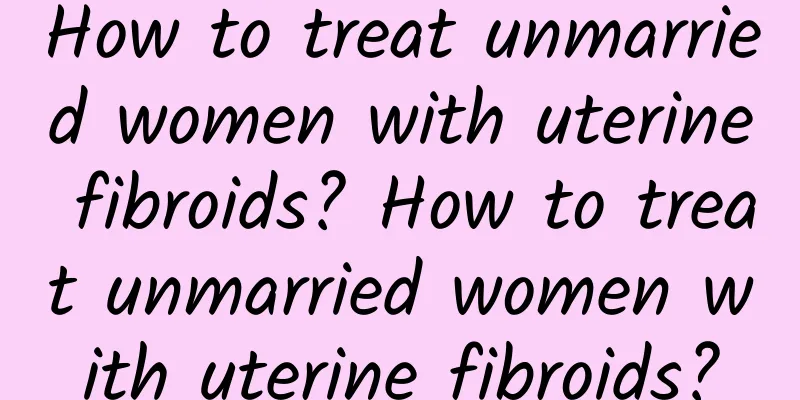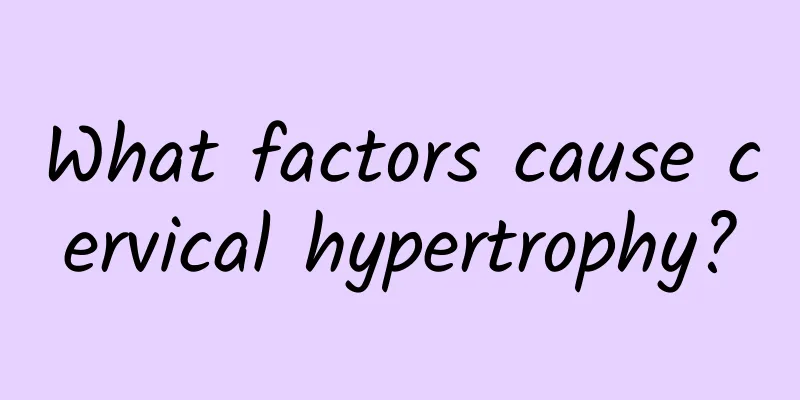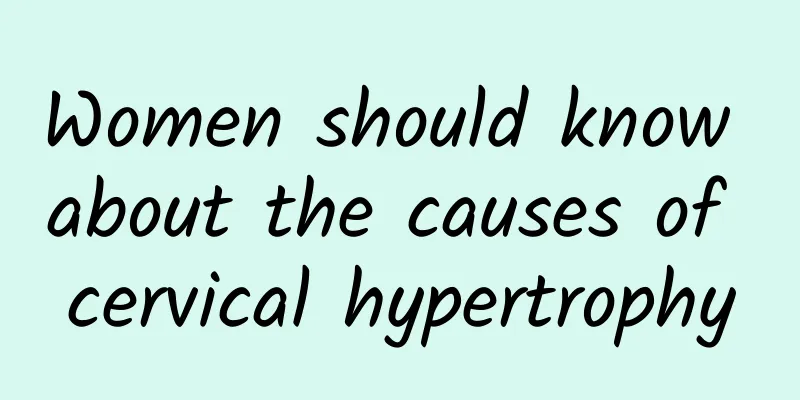How to treat unmarried women with uterine fibroids? How to treat unmarried women with uterine fibroids?

|
Uterine fibroids are a very common gynecological disease. Generally speaking, uterine fibroids are discovered through physical examinations, and patients generally have no obvious symptoms. Some unmarried female friends will be very worried after suffering from uterine fibroids, worrying that it will affect their future fertility, so it is very important to choose a treatment method at this time. 1. Conservative treatment - follow-up observation: This method is more suitable for patients with small uterine fibroids and mild symptoms, especially for women approaching menopause. The sex hormone level of women approaching menopause will gradually decrease, and the uterine fibroids will gradually shrink. Such patients should be followed up regularly for 3 to 6 months to see whether the uterine fibroids have increased, and treatment methods should be formulated according to the condition. 2 Conservative treatment --- drug treatment: This method is more suitable for uterine fibroids that are smaller than the size of a 2-month pregnant uterus, with no obvious symptoms, and when the patient is approaching menopause and cannot undergo surgery. Commonly used drugs include: androgens, gonadotropin-releasing hormone analogs, and anti-progesterone drugs (mifepristone). 3. Surgical treatment resection: This method is suitable for patients who have failed conservative treatment and uterine fibroids with a gestational uterus size of more than 2 months. Uterine fibroids that exceed a certain size will have obvious symptoms, such as secondary anemia. At present, clinical surgical resection methods include: uterine myomectomy, subtotal hysterectomy, and total hysterectomy. For women under 35 years old, who are childless, unmarried, and need to keep their uterus, we will use uterine myomectomy. For women with larger uterine fibroids, suspected lesions, and who do not need to keep their uterus, we will use subtotal hysterectomy and total hysterectomy. 4. Postoperative care - Patients who have undergone total hysterectomy or hysterectomy should pay special attention to vaginal bleeding after surgery, and closely observe the amount and nature of bleeding. Remember to return to the hospital for a follow-up examination after surgery. Control sexual life after surgery to avoid tearing of the surgical wound and causing unnecessary late gynecological inflammation. |
<<: How to treat uterine fibroids during pregnancy? Treatment of uterine fibroids in early pregnancy
Recommend
What are the methods to promote the discharge of residual material from medical abortion?
There are two main types of ovulation promotion. ...
What happens if there is suddenly blood in the leucorrhea like menstruation?
If there is suddenly blood in the leucorrhea and ...
What factors are likely to cause adnexitis?
I believe that many married women are prone to ad...
The treatment of acute cervicitis should not be ignored
Acute cervicitis is mainly caused by infectious a...
Abdominal muscle tension can help early identification of acute pelvic inflammatory disease
Pelvic inflammatory disease causes great distress...
Only by learning how to prevent pelvic inflammatory disease can you avoid the interference of this disease
Pelvic inflammatory disease is a common disease a...
What to do with hyperprolactinemia in early pregnancy
Some women have high prolactin levels after pregn...
Experts explain how to treat chronic adnexitis
With the development of society, more and more fe...
What is uterine fibroids? How to treat uterine fibroids? Causes and treatment methods
What is uterine fibroids and how to treat them? U...
The dangers of ectopic pregnancy cannot be underestimated!
Many female friends do not know the harm of ectop...
Can abnormal itching of leucorrhea cause pregnancy?
Abnormal vaginal discharge and itching are usuall...
Are multiple uterine fibroids serious? What are the dangers of multiple uterine fibroids?
Women often have abdominal pain, menstrual disord...
Are you ready for abortion?
Many couples have an unexpected pregnancy due to ...
How to treat cervical hypertrophy and protrusion
Cervical hypertrophy and protrusion can be improv...
"Run" to France to drink red wine! ——Registration
When I ran for the first time in 2013, whether it...









